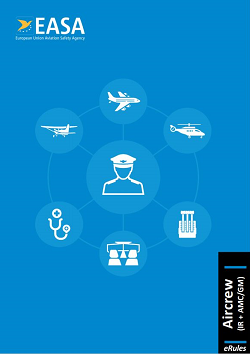FCL.105.H LAPL(H) – Privileges
Regulation (EU) No 1178/2011
The privileges of the holder of an LAPL for helicopters are to act as PIC on single-engine helicopters with a maximum certificated take-off mass of 2 000 kg or less, carrying a maximum of 3 passengers, such that there are never more than 4 persons on board.
FCL.110.H LAPL(H) – Experience requirements and crediting
Regulation (EU) 2018/1119
(a) Applicants for the LAPL(H) shall have completed 40 hours of flight instruction on helicopters. At least 35 hours of which shall be flown on the type of helicopter that is to be used for the skill test. The flight instruction shall include at least:
(1) 20 hours of dual flight instruction; and
(2) 10 hours of supervised solo flight time, including at least 5 hours of solo cross-country flight time with at least 1 cross-country flight of at least 150 km (80 NM), during which one full stop landing at an aerodrome different from the aerodrome of departure shall be made.
(b) Crediting. Applicants with prior experience as PIC may be credited towards the requirements of point (a).
The amount of credit shall be decided by the DTO or the ATO where the pilot undergoes the training course, on the basis of a pre-entry flight test, but shall in any case:
(1) not exceed the total flight time as PIC;
(2) not exceed 50 % of the hours required in point (a);
(3) not include the requirements of point (a)(2).
AMC1 FCL.110.H LAPL(H) Experience requirements and crediting
ED Decision 2020/005/R
CREDITING: PRE-ENTRY FLIGHT TEST
The pre-entry flight test referred to in FCL.110.H(b) should cover the total content of the syllabus of flight instruction for the issuance of the LAPL(H), in accordance with AMC2 FCL.115.
FCL.135.H LAPL(H) – Extension of privileges to another type or variant of helicopter
Regulation (EU) No 1178/2011
(a) The privileges of an LAPL(H) shall be limited to the specific type and variant of helicopter in which the skill test was taken. This limitation may be removed when the pilot has completed:
(1) 5 hours of flight instruction, including:
(i) 15 dual take-offs, approaches and landings;
(ii) 15 supervised solo take-offs, approaches and landings;
(2) a skill test to demonstrate an adequate level of practical skill in the new type. During this skill test, the applicant shall also demonstrate to the examiner an adequate level of theoretical knowledge for the other type in the following subjects:
— Operational procedures,
— Flight performance and planning,
— Aircraft general knowledge.
(b) Before the holder of an LAPL(H) can exercise the privileges of the licence in another variant of helicopter than the one used for the skill test, the pilot shall undertake differences or familiarisation training, as determined in the operational suitability data established in accordance with Part-21. The differences training shall be entered in the pilot’s logbook or equivalent record and signed by the instructor.
ED Decision 2011/016/R
DIFFERENCES AND FAMILIARISATION TRAINING
(a) Differences training requires the acquisition of additional knowledge and training on an appropriate training device or the aircraft.
(b) Familiarisation training requires the acquisition of additional knowledge.
FCL.140.H LAPL(H) – Recency requirements
Regulation (EU) 2019/1747
Holders of an LAPL(H) shall exercise the privileges of their licence on a specific type only if in the last 12 months they have either:
(a) completed at least six hours of flight time on helicopters of that type as PIC, or flying dual or solo under the supervision of an instructor, including six take-offs, approaches and landings and completed a refresher training of at least 1 hour of total flight time with an instructor;
(b) passed a proficiency check with an examiner on the specific type before resuming the exercise of the privileges of their licence. That proficiency check programme shall be based on the skill test for the LAPL(H).
AMC1 FCL.140.H(b)(1) LAPL(H) Recency requirements
ED Decision 2020/005/R
The proficiency check should follow the content of the skill test that is set out in AMC2 FCL.125, point (e).
